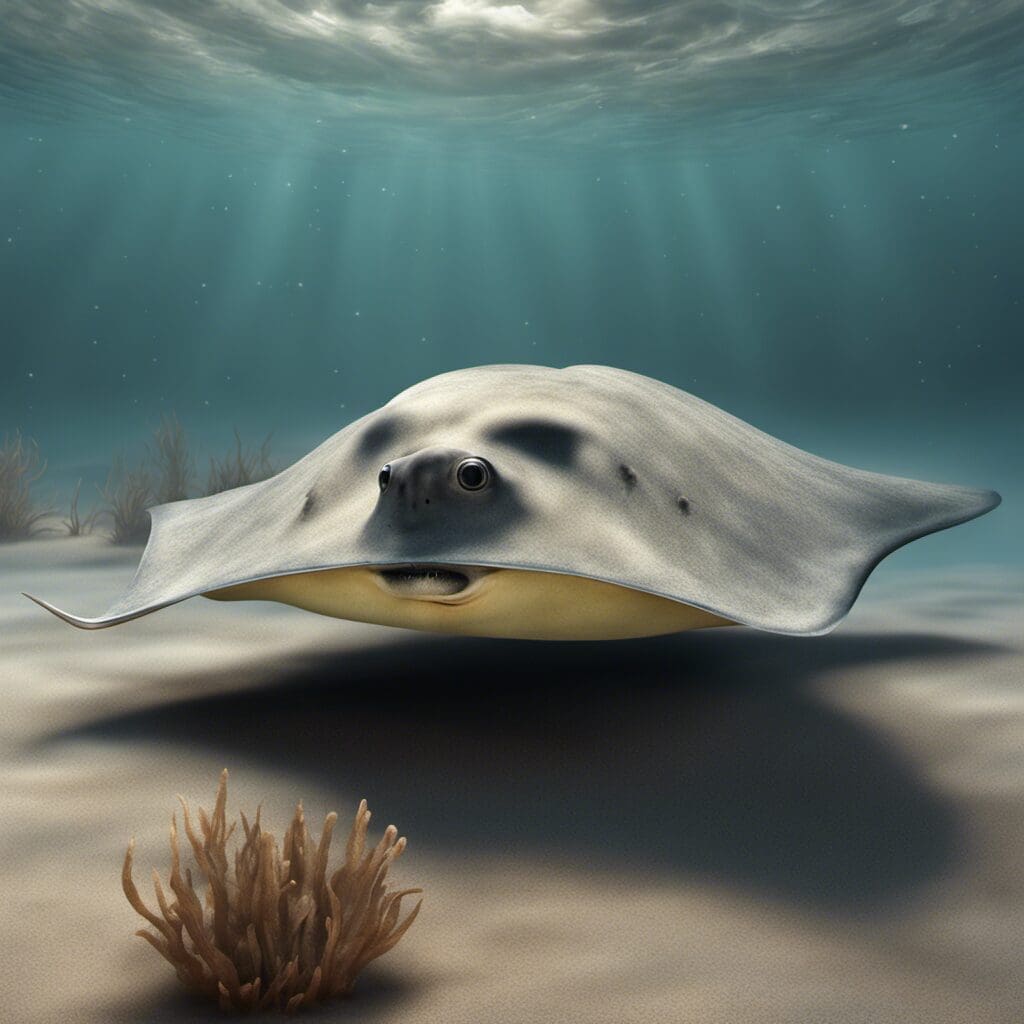Introduction
The Southern Stingray, or ‘Dasyatis Americana’, is a proud member of the Dasyatidae family. Known for their demure nature, they are as intriguing to scientific observation as they are to enthusiastic anglers.
Conservation Status
As it stands, the Southern Stingray has not been evaluated by the International Union for Conservation of Nature, making its official conservation status unclear. However, owing to its broad geographic range and considerable population size, they are not considered significantly at risk.
Statistics
| Specifics | Average | Range |
|---|---|---|
| Length | 2.6 feet | Up to 5 feet |
| Weight | 50 lbs | Up to 200 lbs |
| Average Lifespan | 15-25 years | – |
Distribution
The Southern Stingray is predominantly found in the western Atlantic Ocean, stretching from New Jersey to Brazil, including the Gulf of Mexico and the Caribbean Sea. They are residents rather than migrants, sticking to their familiar habitats year-round.
Habitats
Southern Stingrays prefer warmer waters, typically residing in saltwater habitats. They thrive in shallow, coastal regions, settling from the surface down to depths of 200 feet. They are also remarkably adaptive and can also be found in freshwater environments.
When and Where to See
Southern Stingrays tend to be seen throughout the day, with peak activity at dusk. Given their preference for warmer waters, they are prevalent almost year-round, with the highest sightings occurring during the warmer months.
Best Fishing Locations
Favourable stingray fishing locations span from the Bay of Campeche in Mexico to the Florida Keys. Below are the top 10 locations:
1. Florida Keys, Florida
2. Port Isabel, Texas
3. Brazos Santiago Pass, Texas
4. Santa Rosa Island, Florida
5. Marathon, Florida
6. Tampa Bay, Florida
7. Redfish Bay, Texas
8. Galveston Bay, Texas
9. Biscayne Bay, Florida
10. Apalachicola Bay, Florida
How to Catch
Fishermen often use shrimp, squid, or small baitfish when pursuing Southern Stingrays. Patience is key as they are bottom dwellers, so bottom fishing is the preferred fishing technique. The best time of day for fishing is around dusk.
Identification Guide
They are typically brown to olive in color, with a white underbelly. The Southern Stingray has a diamond-shaped body, and a pointed, whip-like tail housing a venomous stinger.
Culinary
Southern Stingray meat sports a rich, distinctive taste. It can be baked, fried, or grilled and is a mainstay in dishes like stingray curry or barbecue.
Additional Information
Southern Stingrays are solitary creatures, perfectly camouflaged in their environments until feeding times. They are a favored prey by large sharks. Stingrays have been featured in folklore and myths, often revered for their quiet elegance and potent venoms.
References and Further Reading
1. ‘Dasyatis Americana’ – The Encyclopedia of Life[[link]2. ‘Stingrays’ – Oceana[[link]3. ‘Southern Stingray’ – The Florida Museum[[link]
4. ‘Species profile: Southern Stingray’ – Department of Primary Industries and Regional Development, Western Australia[[link]Kindly consult these resources to delve into the fascinating world of Southern Stingrays

